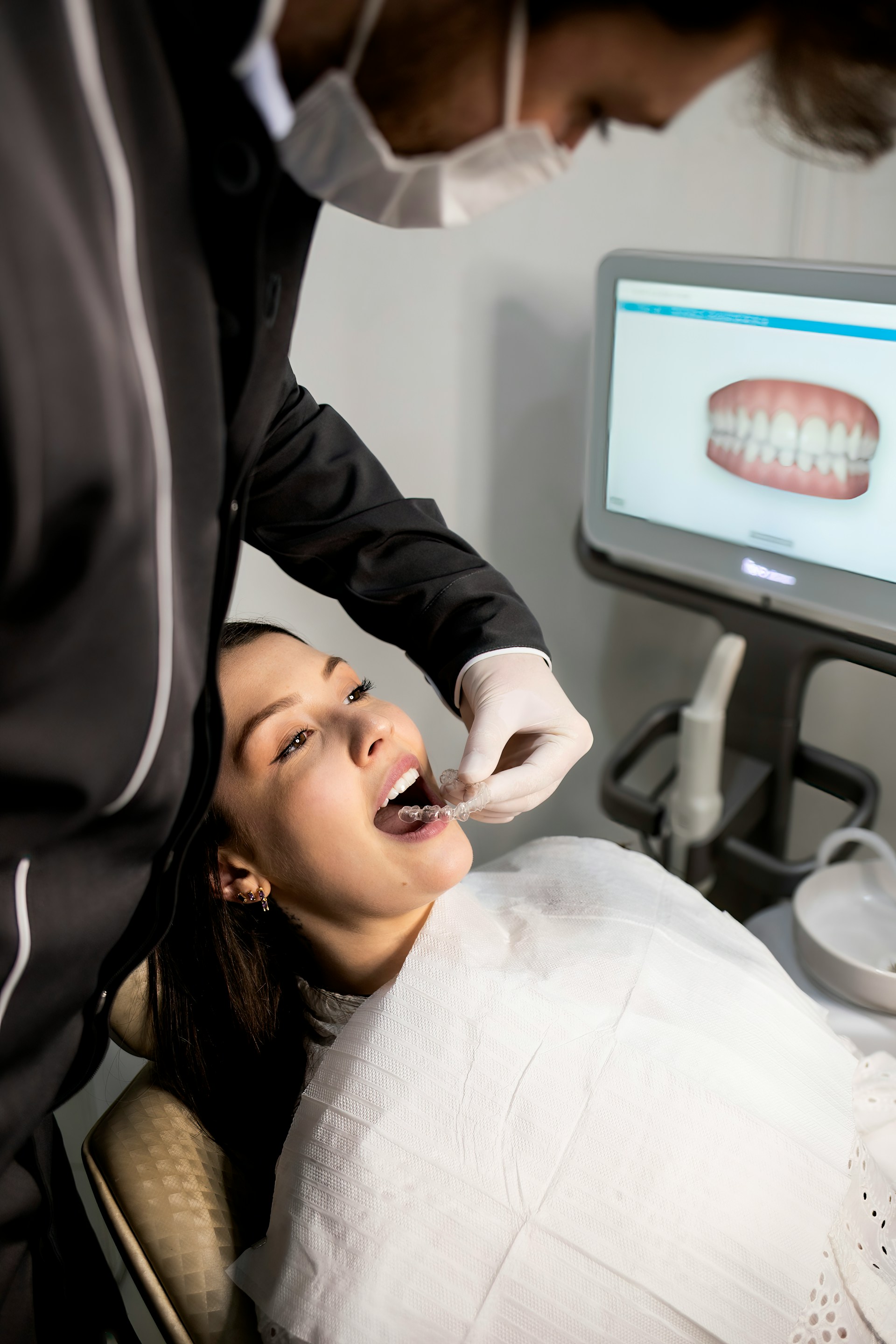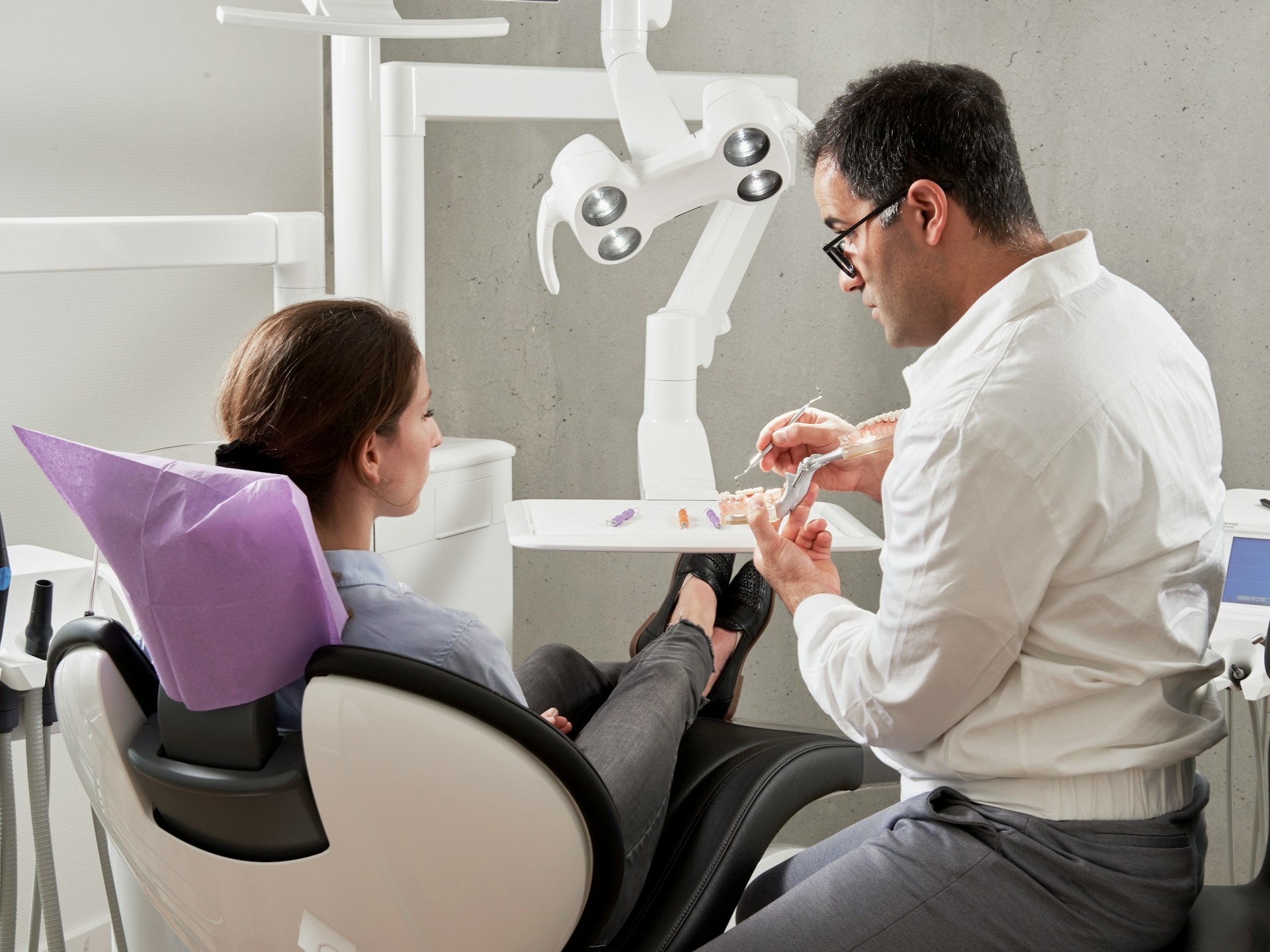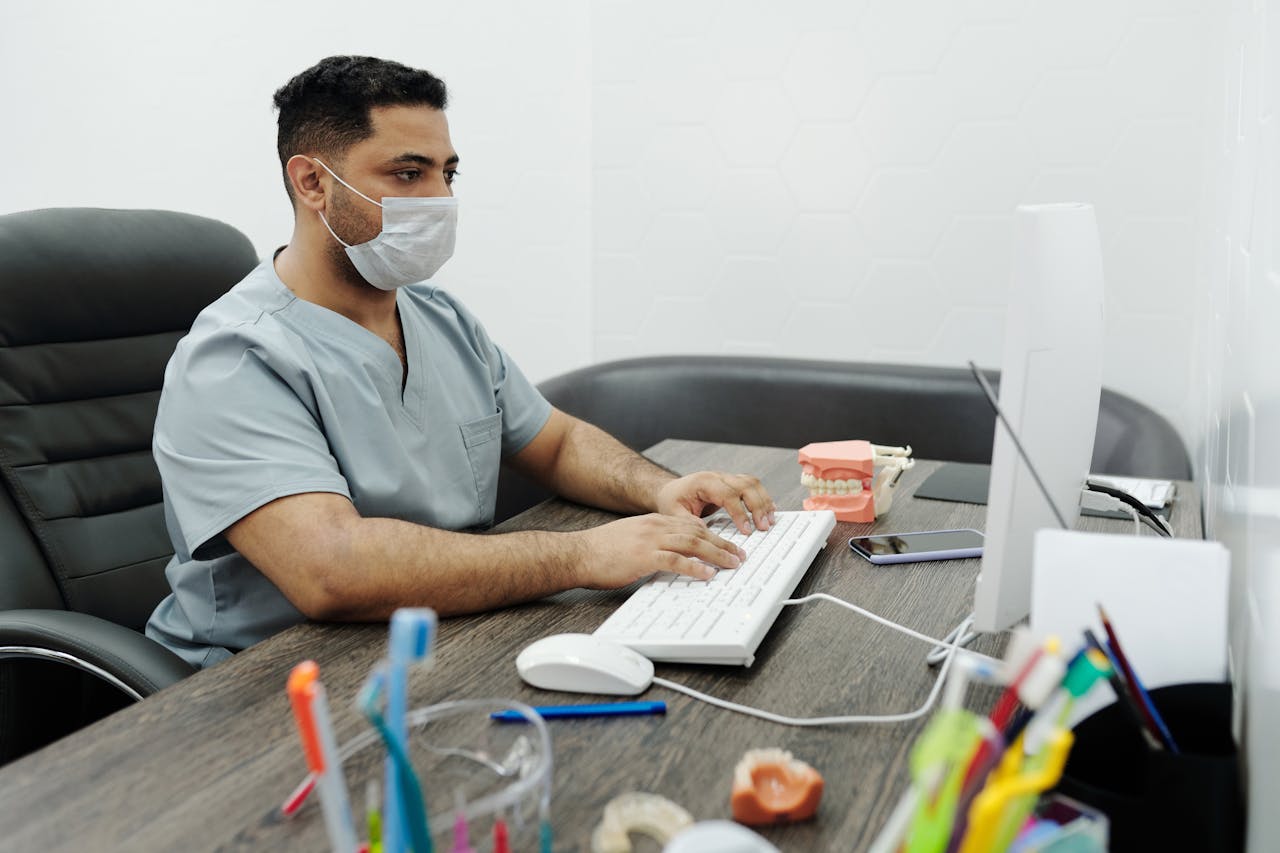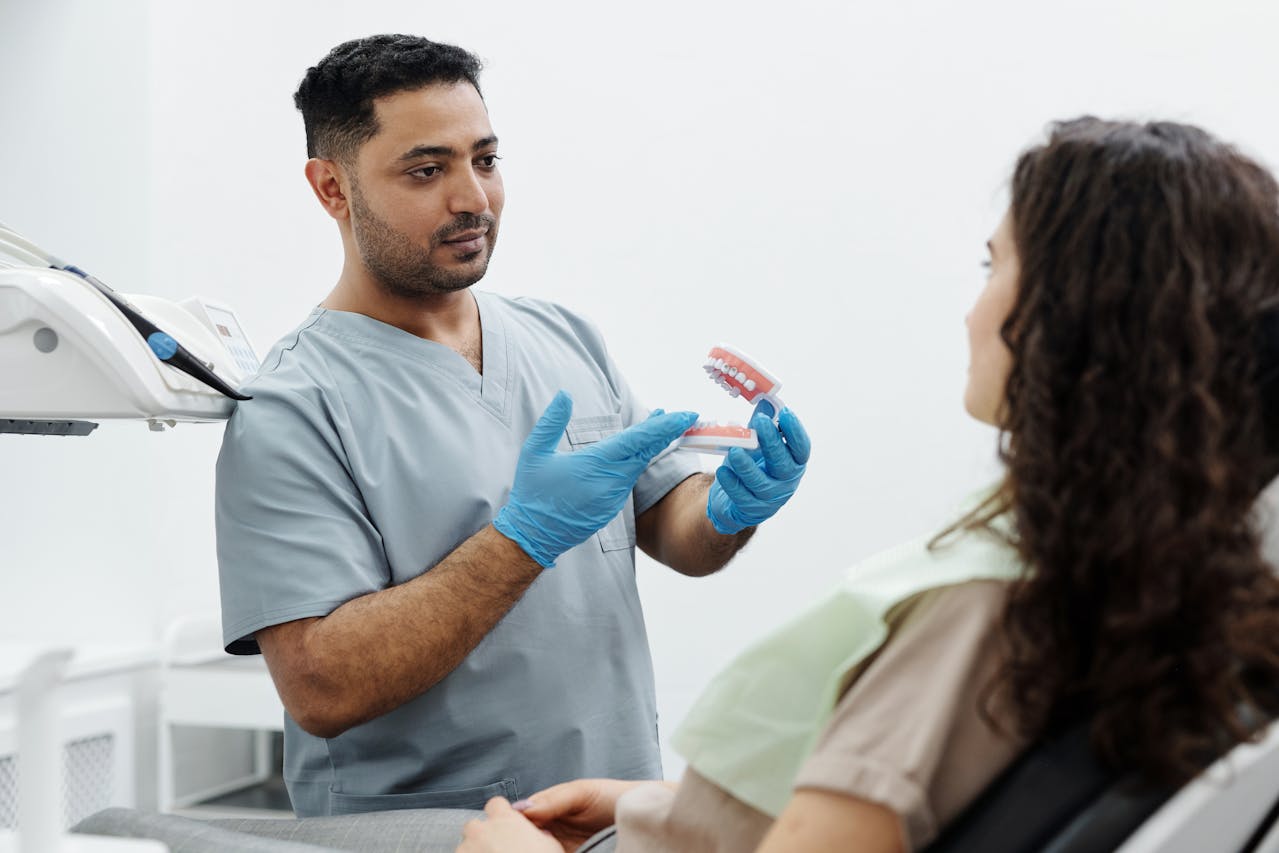How to Automate Patient Follow-Ups in Dental Practices

Dental practices lose an average of $150,000 annually from missed appointments and scheduling errors, with industry no-show rates often exceeding 15%. Yet research shows that automated reminders reduce dental appointment no-shows by 22.95%, transforming missed opportunities into confirmed visits and recovered revenue. With modern patients increasingly expecting digital communication—82% of dental appointment requests now come from mobile devices—implementing systematic follow-up automation is no longer optional but essential for practice sustainability.
An effective solution like the Arini AI Receptionist Platform handles both inbound and outbound patient calls with natural language processing specifically tuned for dental workflows, ensuring 24/7 communication without burdening staff.
Key Takeaways
- No-show reduction is achievable through strategic automated reminders, recovering significant lost revenue
- 40-60% of patients cannot accurately recall verbal instructions given during appointments, making written automated follow-ups critical for treatment compliance
- Studies demonstrate that over 60% of patients misunderstand aftercare directions immediately after appointments, leading to complications, anxiety, and reduced treatment effectiveness.
- HHS allows email/text with reasonable safeguards, and patients can opt to receive unencrypted messages after being warned of risks.
- Mobile-first communication is essential as 78% of patients aged 18-34 prefer mobile access over desktop, requiring text-based and mobile-optimized solutions
- Integration with practice management software (OpenDental, Dentrix, EagleSoft) ensures real-time data synchronization and eliminates duplicate data entry
Why Automating Patient Follow-Ups Is Critical for Modern Dental Practices
Patient follow-up in dentistry encompasses systematic contact after treatment to monitor recovery, reinforce care instructions, schedule future appointments, and maintain ongoing relationships. Without automation, this process relies heavily on manual staff intervention, creating bottlenecks that impact both patient care and practice efficiency.
The cost of inadequate follow-up is substantial. Studies demonstrate that over 60% of patients misunderstand aftercare directions immediately after appointments, leading to complications, anxiety, and reduced treatment effectiveness. Simultaneously, practices with 15% no-show rates lose approximately $150,000 annually from missed appointments and scheduling gaps.
Automation addresses these challenges by ensuring consistent, timely communication that doesn't depend on staff availability or workload fluctuations. Dr. Chun Hung Chu, Clinical Professor at The University of Hong Kong, emphasizes that "Dentists should make it a practice to follow up with patients after appointments. This allows the dentist to monitor the patient's progress, address any concerns or questions, and ensure patient satisfaction with the care provided."
The Cost of Manual Follow-Up Systems
Manual follow-up systems create significant operational inefficiencies:
- Staff spend 10-15 hours weekly making reminder calls
- Successful contact rates for telephone reminders range from only 30-60% due to calls made during business hours when patients are unavailable
- Inconsistent follow-up leads to patients "falling through the cracks"
- Staff burnout increases when administrative tasks prevent focus on patient care
- Revenue leakage occurs from unfilled appointment slots that could have been recovered
How Automation Reduces Staff Workload
Automated systems free staff from repetitive tasks while improving patient outcomes:
- Some practices using automated scheduling systems save up to 40 hours per month on patient communication tasks
- Staff can focus on complex scheduling scenarios and in-office patient needs
- Consistent communication protocols ensure every eligible patient receives timely reminders
- Real-time appointment confirmations, cancellations, and rescheduling reduce phone tag
- Front desk teams can prioritize high-value activities that directly impact patient experience
Understanding Appointment Reminders: Text, Voice, and Automated Systems
Automated appointment reminder systems operate through multiple communication channels, including SMS text messages, emails, phone calls, and patient portal notifications. These systems integrate with practice management software to automatically trigger reminders at predetermined intervals before scheduled appointments.
The effectiveness of different reminder modalities varies significantly. SMS text message reminders achieve 89% open rates within 15 minutes of delivery, substantially outperforming email reminders at 68% open rates. Additionally, SMS reminders report successful contact rates of 97-99%, compared to the 30-60% success rate of traditional phone calls.
Text vs. Voice: Which Reminder Method Works Best
The choice between text and voice reminders depends on patient demographics and communication preferences:
- Younger patients aged 18-34 book appointments via mobile 78% of the time and strongly prefer text-based communication
- Older Patients still prefer phone calls for their scheduling needs, making voice reminders essential for this demographic
- Text reminders excel at delivering concise information with clear action items
- Voice reminders provide more detailed information and can handle complex scheduling scenarios
- Two-way messaging capabilities allow patients to confirm, cancel, or reschedule without staff intervention
Optimal Timing for Appointment Reminders
Research indicates that strategic timing maximizes reminder effectiveness:
- Initial reminders sent 72-96 hours before appointments provide adequate notice
- Follow-up reminders at 24 hours address last-minute schedule changes
- Same-day reminders 2-4 hours before appointments capture patients who may have forgotten
- Post-treatment follow-ups within 24-48 hours reinforce care instructions when most relevant
- Routine recall messages should begin 2-4 weeks before patients become due for their next visit
The Arini AI Receptionist Platform handles outbound patient calls and provides 24/7 communication for appointment reminders without burdening staff, supporting both text and voice communication channels based on patient preferences.
Choosing the Right Appointment Reminder App for Your Dental Practice
Selecting an appointment reminder app requires careful evaluation of features, compliance, and integration capabilities. The right solution should complement existing workflows while providing the flexibility to adapt to practice-specific needs.
Key considerations include HIPAA compliance, PMS integration capabilities, customization options, and multi-channel communication support. Practices must ensure that any automation platform maintains patient data security while delivering consistent, accurate information across all patient interactions.
Must-Have Features in Reminder Apps
Effective reminder apps include these essential capabilities:
- HIPAA-compliant, encrypted messaging for all patient communications containing PHI
- Bidirectional integration with practice management software for real-time data synchronization
- Multi-channel communication options (SMS, email, voice, patient portal)
- Customizable message templates with patient-specific information
- Two-way messaging allows patients to confirm, cancel, or reschedule
- Patient preference settings for communication method, frequency, and timing
- Comprehensive analytics dashboards tracking delivery rates, responses, and no-show reduction
- Mobile-optimized patient interfaces for seamless self-service
Customizing Appointment Reminder Templates
Personalization significantly improves patient engagement and response rates:
- Include patient names and specific appointment details in all communications
- Customize care instructions based on treatment type and complexity
- Segment messaging by patient demographics, treatment history, and risk levels
- Allow staff to add personal notes for patients requiring special attention
- Test different message formats and timing to optimize response rates
The Patient FAQ & Communication Module provides consistent, customizable communication templates that ensure accurate information across all patient interactions, supporting the creation of personalized, practice-specific messaging.
Integrating Follow-Up Automation with Open Dental Software
Open Dental software serves as the central nervous system for many dental practices, managing patient records, scheduling, billing, and treatment planning. Integrating follow-up automation with Open Dental ensures that all communication activities are synchronized with the practice's core operational data.
Effective integration eliminates duplicate data entry, reduces errors, and ensures that automated communications reflect the most current patient information and appointment details. The OpenDental API enables seamless connection with third-party automation platforms, allowing real-time data exchange and workflow automation.
Step-by-Step Open Dental Integration Setup
Successful integration follows a systematic approach:
- Assessment: Evaluate the current Open Dental configuration and identify automation requirements
- API Configuration: Enable OpenDental API access and configure authentication credentials
- Field Mapping: Map patient data fields between Open Dental and the automation platform
- Workflow Design: Configure automated triggers based on appointment types, patient segments, and timing requirements
- Testing: Conduct thorough testing with sample patient records to validate data synchronization
- Staff Training: Ensure team members understand how to monitor and manage automated communications
- Optimization: Refine workflows based on performance metrics and staff feedback
Troubleshooting Common Integration Issues
Common integration challenges and solutions include:
- Data synchronization delays: Implement real-time API calls rather than batch processing
- Incomplete patient information: Verify field mapping and ensure all required data fields are populated
- Appointment status mismatches: Configure clear status definitions and update protocols
- Custom field compatibility: Work with vendors to ensure custom Open Dental fields are properly supported
- Performance impacts: Monitor system performance and optimize API call frequency
The Integration & Workflow Customization Module offers one-click integrations with OpenDental and customizable call flows with minimal disruption, supporting flexible customization tools that act as a bridge between systems.
Maximizing Dentrix Dental Software for Automated Patient Communication
Dentrix dental software provides comprehensive practice management capabilities that can be enhanced through strategic automation integration. The platform's communication hub, patient recall features, and appointment book synchronization create a foundation for effective automated follow-up systems.
Dentrix supports native automation features while also enabling third-party integrations through its API and partner ecosystem. Practices can leverage both built-in capabilities and external solutions to create comprehensive patient communication workflows that address all follow-up needs.
Dentrix Native Features vs. Third-Party Tools
Dentrix offers several native automation capabilities:
- Appointment reminder scheduling through the Communication Hub
- Patient recall management with customizable intervals
- Email and text messaging integration
- Appointment book synchronization across providers
- Basic analytics and reporting on communication activities
However, third-party tools often provide more advanced features:
- 24/7 AI-powered voice calling capabilities
- Sophisticated natural language processing for patient interactions
- Advanced analytics with revenue impact metrics
- Multi-location support for DSOs and group practices
- Enhanced customization options for complex workflows
Setting Up Automated Recall in Dentrix
Effective recall automation in Dentrix requires proper configuration:
- Patient segmentation: Categorize patients by risk level, treatment history, and recall intervals
- Recall rules: Configure automated recall triggers based on individualized intervals rather than universal 6-month schedules
- Communication preferences: Record patient preferences for contact methods and timing
- Message templates: Create personalized recall messages with specific appointment recommendations
- Follow-up sequences: Design multi-touch communication sequences for patients who don't respond initially
- Staff notifications: Configure alerts for staff when manual intervention is required
The Call Answering & Scheduling Module works directly with Dentrix to schedule appointments with custom rules for appointment types and provider availability, ensuring seamless integration with existing Dentrix workflows.
Leveraging Practice Management Software to Streamline Follow-Ups
Practice management software serves as the foundation for effective patient follow-up automation. Modern PMS platforms like OpenDental, Dentrix, EagleSoft, and Denticon provide centralized patient data, scheduling capabilities, and communication tools that enable comprehensive automation workflows.
The key to successful automation lies in seamless integration between the PMS and automation platform. This integration ensures that all automated communications reflect accurate, real-time patient information while maintaining data consistency across all practice systems.
How Practice Management Systems Enable Automation
Practice management software enables automation through several key capabilities:
- Centralized patient database with contact information, treatment history, and preferences
- Real-time appointment scheduling with provider availability and block scheduling rules
- Treatment plan management with procedure-specific follow-up requirements
- Insurance and billing information for accurate fee estimates and coverage explanations
- Multi-location support for practices with multiple offices or DSO operations
- Reporting and analytics for tracking automation effectiveness and ROI
Comparing PMS Options for Follow-Up Capabilities
Different PMS platforms offer varying levels of automation support:
- OpenDental: Strong API capabilities with extensive third-party integration options
- Dentrix: Comprehensive native communication features with a growing third-party ecosystem
- EagleSoft: Reliable scheduling and recall features with moderate integration capabilities
- Denticon: Enterprise-grade features designed for DSO operations with robust automation support
The Arini AI Receptionist Platform integrates seamlessly with OpenDental, Dentrix, EagleSoft, and Denticon with multi-location support for DSOs, ensuring consistent communication across all practice management systems.
Building Effective Patient Follow-Up Workflows with Practice Management Bridge
A practice management bridge refers to middleware technology that enables seamless data exchange between disparate systems. In dental practices, bridge technology connects practice management software with automation platforms, communication tools, and other third-party applications.
Bridge technology addresses the challenge of system interoperability, ensuring that patient data flows smoothly between systems without manual intervention or data duplication. This approach maintains data integrity while enabling sophisticated automation workflows that span multiple platforms.
What Is a Practice Management Bridge
Practice management bridges provide several key functions:
- API management: Standardize communication protocols between different software systems
- Data transformation: Convert data formats between incompatible systems
- Real-time synchronization: Ensure immediate data updates across all connected platforms
- Error handling: Manage data inconsistencies and system failures gracefully
- Security protocols: Maintain HIPAA compliance and data encryption across all connections
- Audit trails: Track all data exchanges for compliance and troubleshooting purposes
When Your Practice Needs Bridge Technology
Bridge technology becomes essential when:
- Multiple practice management systems need to be synchronized (common in DSOs)
- Legacy systems lack modern API capabilities but require integration with newer platforms
- Complex workflows span multiple third-party applications
- Data consistency across systems is critical for patient safety and compliance
- Manual data entry creates significant operational inefficiencies
The Integration & Workflow Customization Module supports flexible customization tools and seamless PMS integration that acts as a bridge between systems, enabling sophisticated automation workflows without requiring extensive technical expertise.
Using AI Voice Agents to Automate Outbound Patient Calls
AI voice agents represent the cutting edge of patient communication automation, enabling 24/7 outbound calling capabilities that mimic human conversation while providing consistent, accurate information. These systems use natural language processing specifically tuned for dental workflows to handle appointment confirmations, recall reminders, and post-treatment follow-ups.
AI voice technology has evolved significantly from basic interactive voice response (IVR) systems to sophisticated conversational agents that can understand patient intent, respond to questions, and complete complex scheduling tasks without human intervention.
How AI Voice Technology Works in Dental Practices
Modern AI voice agents function through several key components:
- Natural language understanding: Interprets patient responses and adapts conversation flow accordingly
- Dental-specific training: Recognizes dental terminology, appointment types, and common patient questions
- Personalized communication: References patient-specific information from integrated PMS data
- Multi-turn conversations: Handles complex interactions requiring multiple exchanges
- Real-time scheduling: Books, confirms, or reschedules appointments directly in the PMS
- Escalation protocols: Transfers calls to human staff when patient needs exceed AI capabilities
Measuring AI Call Performance
Effective AI voice agent performance is measured through several key metrics:
- Call completion rates: Percentage of calls that successfully deliver intended information
- Appointment conversion rates: Percentage of calls that result in booked or confirmed appointments
- Patient satisfaction scores: Patient feedback on call quality and helpfulness
- First-call resolution: Percentage of patient needs addressed without escalation
- Abandonment rates: Percentage of calls where patients hang up before completion
- Revenue impact: Direct correlation between AI calls and practice production increases
The Arini AI Receptionist Platform handles inbound and outbound patient calls with natural language processing tuned for dental workflows, available 24/7 to ensure consistent communication regardless of staff availability.
Reducing No-Shows Through Strategic Follow-Up Timing and Frequency
Strategic timing and frequency of automated follow-ups significantly impact no-show reduction effectiveness. Research demonstrates that comprehensive studies analyzing over 1.6 million appointments found that automated reminders increase show rates by 35-40% compared to manual reminder systems.
The optimal reminder cadence balances effectiveness with patient experience, avoiding both under-communication (leading to forgotten appointments) and over-communication (causing patient annoyance or message fatigue).
The Science of Reminder Timing
Evidence-based timing strategies include:
- 7-day advance notice: Initial reminder providing adequate planning time
- 3-day confirmation: Secondary reminder addressing potential schedule conflicts
- 24-hour reminder: Final confirmation capturing last-minute changes
- Same-day check-in: Optional reminder 2-4 hours before appointment for high-risk patients
- Post-treatment follow-up: Within 24-48 hours after procedures, when instructions are most relevant
Balancing Frequency Without Overwhelming Patients
Effective frequency management includes:
- Patient preference settings: Allow patients to control communication frequency and methods
- Risk-based segmentation: High no-show risk patients receive more frequent reminders
- Response-based triggers: Additional reminders sent only if initial messages go unanswered
- Cancellation windows: Clear communication about rescheduling policies and deadlines
- Opt-out mechanisms: Easy ways for patients to adjust or stop communications
Some practices achieve no-show reductions of up to 40% when implementing comprehensive automated reminder programs with multiple touchpoints, demonstrating the significant impact of strategic timing and frequency.
Tracking ROI: Measuring the Impact of Automated Follow-Ups
Measuring the return on investment from automated follow-ups requires tracking both quantitative metrics and qualitative improvements. Successful practices monitor key performance indicators that demonstrate financial impact, operational efficiency, and patient satisfaction improvements.
ROI measurement begins with establishing baseline metrics before implementation and tracking changes over time. This approach enables practices to quantify the direct financial benefits of automation while identifying areas for optimization.
Key Metrics Every Practice Should Monitor
Essential performance metrics include:
- No-show rate reduction: Percentage decrease in missed appointments
- Appointment confirmation rates: Percentage of patients confirming scheduled visits
- Staff time savings: Hours saved on manual reminder activities
- Revenue recovery: Additional production generated from recovered appointments
- Patient satisfaction scores: Changes in patient feedback regarding communication
- Self-scheduling uptake: Percentage of patients using automated scheduling options
- Call completion rates: Successful delivery of automated communications
Calculating Revenue Impact from Reduced No-Shows
Revenue impact calculation involves several steps:
- Establish baseline: Calculate current monthly no-show rate and associated revenue loss
- Implement automation: Deploy an automated follow-up system with consistent protocols
- Measure improvement: Track no-show rate reduction over 3-6 months
- Calculate recovery: Multiply recovered appointments by average production per appointment
- Factor in efficiency: Include staff time savings and reallocation to revenue-generating activities
- Project annual impact: Extrapolate monthly improvements to annual financial benefits
Research shows that automated systems documented $31,456.88 in incremental production for dental practices due to improved schedule compliance, with first-year fees for automated systems typically recovered within the first six months.
The Analytics & Notifications Module tracks call volume, booked appointments, and revenue impact metrics with dashboard reporting and real-time notifications, providing comprehensive ROI measurement capabilities.
Ensuring HIPAA Compliance in Automated Patient Communications
HIPAA compliance is non-negotiable for any automated patient communication system. Dental practices must ensure that all automated communications containing protected health information (PHI) meet strict security and privacy requirements.
HIPAA regulations require that practices implement appropriate administrative, physical, and technical safeguards to protect patient information. This includes using encrypted communication platforms, obtaining patient consent for electronic communications, and maintaining audit trails of all automated interactions.
HIPAA Rules for Text and Voice Reminders
Key HIPAA requirements for automated communications include:
- Encrypted messaging platforms: Standard SMS text messages on public networks are not HIPAA-compliant
- Limited PHI disclosure: Minimize identifiable information in communications that could be accessed by others
- Patient consent: Obtain written authorization for electronic communications containing PHI
- Business Associate Agreements: Ensure automation vendors sign BAAs accepting HIPAA responsibilities
- Access controls: Implement role-based access and authentication for system administration
- Audit trails: Maintain logs of all automated communications for compliance verification
Vetting Automation Vendors for Compliance
Practices should evaluate vendors based on:
- Clear HIPAA compliance documentation: Written policies and procedures for data protection
- Security certifications: Progress toward SOC 2 and ISO 27001 certifications
- Data encryption: End-to-end encryption for all patient communications and data storage
- Staff training: Evidence of employee training on privacy and compliance requirements
- Incident response: Documented procedures for security breach notification and response
- Transparency: Public Trust Center or similar resource detailing data handling practices
The Arini AI Receptionist Platform is HIPAA compliant with secure PMS and telecom integrations, role-based access controls, and a transparent Trust Center for data handling, ensuring that all patient communications meet regulatory requirements.
Implementation Guide: Setting Up Follow-Up Automation in 4 Weeks
Successful implementation of follow-up automation requires a systematic approach that addresses technical integration, staff training, and patient communication. A four-week timeline provides adequate time for thorough setup while delivering quick results.
The implementation process should balance thoroughness with momentum, ensuring that technical requirements are met while maintaining staff engagement and patient experience.
Week 1: Assessment and Software Selection
Week one focuses on foundational planning:
- Current state assessment: Document existing follow-up processes and identify gaps
- Requirements definition: Specify automation needs based on practice size, patient demographics, and PMS
- Vendor evaluation: Compare solutions based on integration capabilities, compliance, and features
- Stakeholder alignment: Ensure team buy-in and establish implementation roles
- Patient communication plan: Develop messaging to inform patients about new automated communications
Week 2-3: Integration and Testing
Weeks two and three address technical implementation:
- System configuration: Set up the automation platform and configure PMS integration
- Template creation: Develop message templates for different appointment types and scenarios
- Workflow design: Configure automated triggers, timing, and escalation protocols
- Testing phase: Conduct thorough testing with sample patient records and scenarios
- Quality assurance: Verify data accuracy, message delivery, and system reliability
Week 4: Launch and Staff Training
Week four focuses on go-live preparation:
- Staff training: Ensure team members understand new workflows and monitoring responsibilities
- Soft launch: Begin with limited patient segments to validate system performance
- Feedback collection: Gather input from staff and patients on initial experience
- Optimization: Refine templates, timing, and workflows based on early results
- Full implementation: Expand to all patient segments with confidence in system reliability
The Arini AI Receptionist Platform enables quick implementation with minimal disruption, customizable call flows, and staff notifications for every booked appointment, supporting rapid deployment without compromising quality.
Frequently Asked Questions
Q: What is the most effective timing for sending appointment reminders to dental patients?
A: Research supports a multi-touch approach with strategic timing intervals. Send initial reminders 72-96 hours before appointments to provide adequate notice, followed by 24-hour confirmations to address last-minute changes, and optional same-day reminders 2-4 hours before high-value or high-risk appointments. Post-treatment follow-ups should be delivered within 24-48 hours when care instructions are most relevant. The optimal cadence balances effectiveness with avoiding patient annoyance from excessive messaging.
Q: How do AI receptionists integrate with existing dental practice management software?
A: AI receptionists integrate with practice management software through secure APIs that enable real-time data synchronization. The integration process typically involves enabling API access in the PMS, configuring authentication credentials, mapping patient data fields between systems, and testing data exchange functionality. Once integrated, AI receptionists can access current appointment schedules, patient contact information, treatment history, and insurance details to provide accurate, personalized communication while automatically updating the PMS with appointment confirmations, cancellations, and new bookings.
Q: What are the HIPAA requirements for automated text appointment reminders?
A: HIPAA requires that automated text reminders containing protected health information (PHI) use encrypted messaging platforms, as standard SMS on public networks is not compliant. Practices must obtain written patient authorization for electronic communications containing PHI, implement Business Associate Agreements with automation vendors, minimize PHI disclosure in messages that could be accessed by others, and maintain audit trails of all automated communications. The American Dental Association recommends limiting identifiable information in appointment reminders and providing clear opt-out mechanisms for patients.
Q: Can automated follow-up systems reduce no-show rates in dental practices?
A: Yes, automated follow-up systems consistently reduce no-show rates in dental practices. Comprehensive studies analyzing over 1.6 million appointments found that automated reminders increase show rates by 35-40% compared to manual systems. Research specifically demonstrates that automated reminders reduce dental appointment no-shows by 22.95%, with some practices achieving reductions of up to 40% when implementing comprehensive multi-touch programs. The financial impact is substantial, with one study documenting $31,456.88 in incremental production from improved schedule compliance.
Q: How much revenue can a dental practice gain from automating patient follow-ups?
A: Revenue gains from automating patient follow-ups are substantial and measurable. Practices with 15% no-show rates typically lose approximately $150,000 annually from missed appointments. Automated systems can recover a significant portion of this lost revenue, with documented cases showing $31,456.88 in incremental production from improved schedule compliance. The ROI is typically realized within six months, as first-year automation fees are recovered through reduced no-shows and increased staff efficiency. Additional revenue comes from staff time reallocation to revenue-generating activities and improved patient retention through better communication.









